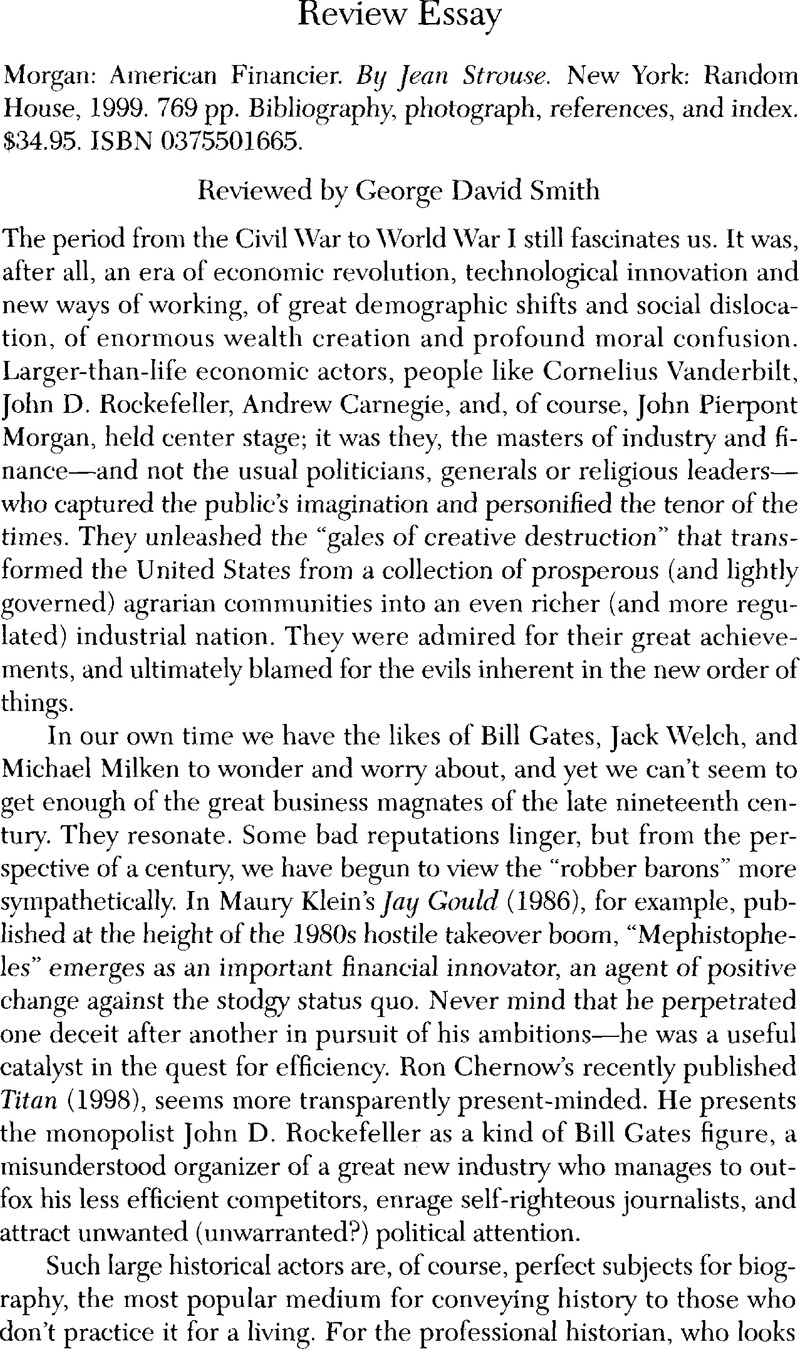No CrossRef data available.
Article contents
Morgan: American Financier - Morgan: American Financier. By Jean Strouse. New York: Random House, 1999. 769 pp. Bibliography, photograph, references, and index. $34.95. ISBN 0375501665.
Published online by Cambridge University Press: 13 December 2011
Abstract

- Type
- Review Essay
- Information
- Copyright
- Copyright © The President and Fellows of Harvard College 2000
References
* Morgan was characterized and caricatured in countless periodical articles and cartoons when he was still alive and soon after his death. Many books have followed. Herbert L. Satterlee, Morgan's son-in-law, wrote a book-length biography, J. Pierpont Morgan: An Intimate Portrait (1939), a hagiographic treatment on which many ensuing works have depended. Frederick Lewis Allen's sympathetic The Great Pierpont Morgan (1949) is generally regarded by historians as more reliable portrayal than Matthew Josephson's more popular, damning portrait in The Robber Barons: The Great American Capitalist, 1861–1901 (1934). Morgan has figured prominently in such superb novels as John Dos Passos, 1919 (1932) and E.L. Doctorow, Ragtime (1975), which have effectively perpetuated populist stereotypes of Morgan as a ruthless, irresistible force. Ron Chernow's The House of Morgan: An American Banking Dynasty and the Rise of Modern Finance (1990) contains a vivid revisionist portrait. The best quick read on Morgan's economic significance is Jonathan Hughes's brilliant and opinionated essay in The Vital Few: The Entrepreneur and American Economic Progress (1986, [1965]).




